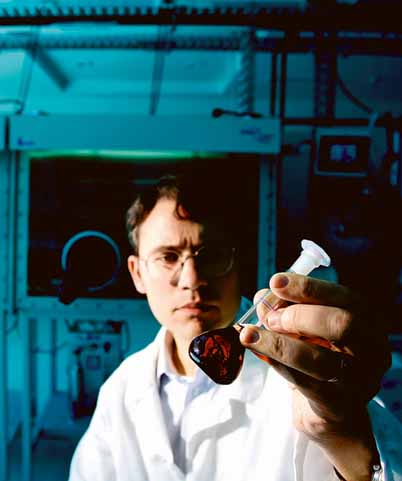Australian researcher developing solar paint
 Researchers at the University of Newcastle in Australia are preparing to commercialize a solar printing technology that will result in the manufacture of solarized water-based paint.
Researchers at the University of Newcastle in Australia are preparing to commercialize a solar printing technology that will result in the manufacture of solarized water-based paint.
University professor Paul Dastoor, who is leading the research, said he and his team are just about a year away from having a full-scale commercial prototype of the paint. A rooftop covered in it could generate enough solar energy to power a house completely, Dastoor said.
He became interested in the concept as an undergraduate 15 years ago and thought ‘how hard can it be?’
“As it turned out it was really hard!” Dastoor writes in an email.
He is using plastic polymers with semi-conductor powers to construct solar cells.
“Seven years ago, we realized that we should be able to make tiny particles from these semiconducting polymers and suspend them in water by using a surfactant,” Dastoor said. “At first many people thought that this was a silly idea – water is a contaminant to organic solar cells and surrounding the particles with surfactant should stop them connecting to each other – but with careful processing we are able to overcome both these hurdles.”
He and his team have not developed any commercial partnerships and he said he doesn’t expect that they will need any help from industry to bring the solar paint to market.
“We have developed full commercialization and business plans and hope to produce our first commercial-scale prototypes at the end of this year,” Dastoor said. “The path to commercialization involves developing the large-scale production technology here at the University of Newcastle within the Newcastle Institute for Energy and Resources.”
The University already has new pilot-scale manufacturing facilities on site and expects to expand them within coming years.
The tricky thing with paint is that it doesn’t last forever. It’s usually a quick, simple and affordable way to spruce a place up. But it generally needs to be reapplied after time. Given that, Dastoor’s paint will have to be extraordinarily resilient or cheap in order to compete with traditional solar panels that last more than 20 years.
It’s cheap, he said, and more than resilient enough.
“Our modelling shows that the materials costs for the technology are going to be around $5 per square meter,” he said. “Our calculations show that our solar cells only have to be 3 percent efficient and last for three years to be cheaper than conventional solar cells and that our target of a 6 percent efficient cell that lasts for six years will produce energy at a cost that is less than that of a coal-fired power station – now, that is huge!”



